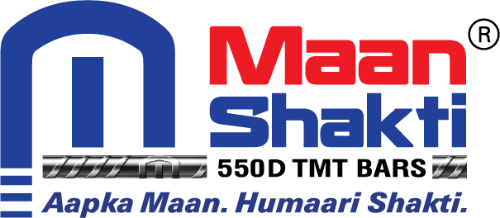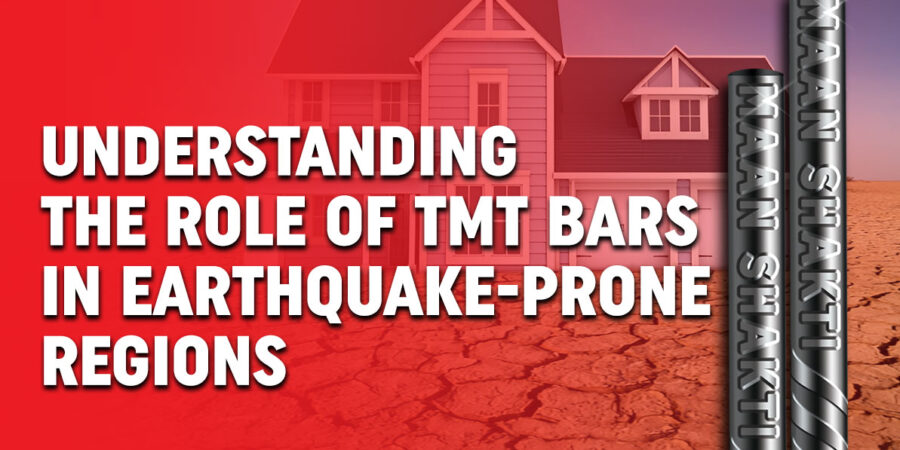The earth, as a planet, has various faults due to the turbulent geological past under your feet. Geologists observe a few of these faults at its surface and map them. On the other hand, other faults are hidden multiple kilometres below the earth’s surface. Do you know what these faults are? Well, these are places where natural calamities may occur.
Earthquakes may have terrifying impacts like ground shaking, landslides, fires, tsunamis, etc. It has a major impact on the lives of people surrounding that area. Of course, the magnitude, intensity, and duration of occurrence determine the destruction and harm.
Since earthquakes are a type of seismic hazard, contractors must use specific raw materials that ensure safety in seismic regions witnessing earthquakes and other natural calamities. That’s where the role of earthquake resistant TMT bars comes into being. What are earthquake-resistant bars, and why do you need them for construction? If you are unsure of these bars’ benefits in construction, here’s more to learn.
Why Choose TMT Bars for Earthquake Prone Areas?
The BIS or Bureau of India Standards has stated that TMT bars like Fe 415 and Fe 500 grades have the right tensile strength and ductility. The grades are the top choice for constructing structures and buildings in areas prone to natural disasters like earthquakes. A contractor can use these grades to build a commercial, residential and industrial structure in the seismic-prone regions.
It was somewhere around 1979 when the construction domain embraced the Fe 415 and Fe 500 grades. In today’s world, these rebars have become the quintessential solution for any type of construction. They are unique because they undergo a thermo-mechanical treatment during the manufacturing process.
That’s why they are called TMT or thermo-mechanically treated bars. Another speciality of these bars is that they have a softer core and harder outside. The following are the benefits of earthquake-resistant TMT bars for constructing any structure in the seismic zones:
-
Extremely Safe to Use
The prime goal of using TMT bars in an earthquake-prone region is improved safety. Thanks to the superior elasticity and ductility that lets these bars absorb and deflect the tremors. This can significantly reduce further risks associated with injuries and collapses.
-
Builds a Strong Structure
The next benefit is that TMT bars are extremely strong enough to build a robust structure. Since they have high-strength grades, they can withstand forces during an earthquake without hampering structural integrity.
-
A Cost-Effective Solution
No wonder earthquake-resistant bars are more expensive than regular steel. However, the price is worth your consideration because of the long-term cost benefits. Besides, it ensures improved durability and needs less maintenance because of corrosion resistance. So, it reduces the costs associated with the building or structure in the long run.
-
Durable and Corrosion-resistant
Compared to regular steel, TMT bars do not damage the structure because of corrosion. The corrosion-resistant TMT bars can prevent rust from damaging the internal structure. This also ensures improved strength and structural integrity that protects the building as a long-term investment.
So, by selecting earthquake-resistant TMT bars, you can ensure safety and structural integrity.
Reasons Why TMT Bars are Suitable for Earthquake-Prone Areas
TMT or thermo-mechanically treated bars are appropriate for earthquake-prone regions because of their properties and composition that improve the seismic resistance of structures. The following are the reasons that make TMT bars suitable for seismic regions:
Microstructures of TMT Bars
TMT bars contain a unique microstructure with two key phases – pearlite and ferrite. The harder outer covering and softer core are the prime reasons these bars benefit construction in seismic areas. The softer core makes TMT bars resistant to earthquakes and other natural calamities. Ferrite is the soft and ductile microstructural phase.
It resembles pure iron, while carbon fits in gaps. About 0.02 per cent carbon fits into the structure at 725 degrees C. When it comes to regular temperature, it may drop by 0.006 per cent carbon. Now, the brittle and hard phase is the pearlite. This banded structure is crucial for the bar’s strength and ductility.
Both pearlite and ferrite make TMT bars more resistant to bending. The improved performance translates to earthquake resistance. The bars absorb and deflect the seismic forces effectively.
Presence of Micro-Alloying Elements
When compared to standard steel, TMT bars include raw materials such as coal, coke, dolomite, iron, and limestone. Besides these raw materials, TMT bars are built with micro-alloying materials such as titanium, vanadium, and niobium. These raw materials significantly improve their durability, strength, and performance. The following are the alloying materials used in the process:
-
Boron
This micro-alloying element improves the bendable quality by allowing them to cool effectively during production.
-
Niobium & Zirconium
These elements refine the grain structure of the steel. This finer grain structure makes these bars weldable and stronger.
-
Titanium & Rare Earth Metals
Rare earth metals like cerium & lanthanum can remove impurities and ensure a uniform microstructure throughout the bar.
-
Molybdenum and Vanadium
While vanadium strengthens the bars, Molybdenum adds excellent corrosion resistant quality.
Owing to the excellent ductility, TMT bars ensure controlled deformation without compromising durability or strength. The bars absorb and dissipate the seismic energy. So they can reduce impacts of unexpected shocks as well as vibrations resulting from seismic activities.
The controlled heat treatment offers improved yield strength and allows the bars to maintain structure integrity. So, these bars can protect against premature failure due to dynamic loading.
Wrapping up
So, it goes without saying that the safety of individuals surrounding the area is a major concern for contractors. Considering this, every contractor is responsible for selecting top-quality TMT bars that ensure safety in earthquake-prone regions.
So, if you are wondering where to buy the best earthquake resistance bars from the best TMT Bar manufacturers, you must select the team based on the standards, grades and certifications. Get a consultation from a manufacturer that ensures ISO and BIS certifications with their bars.


